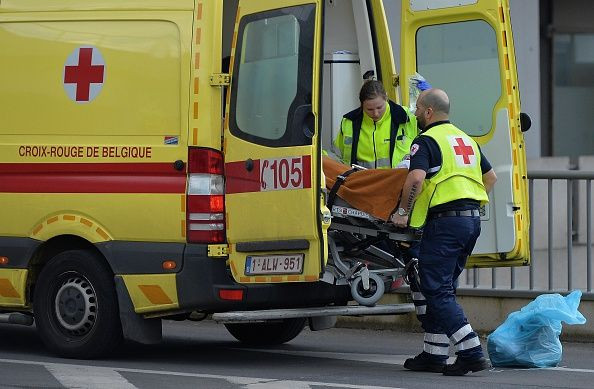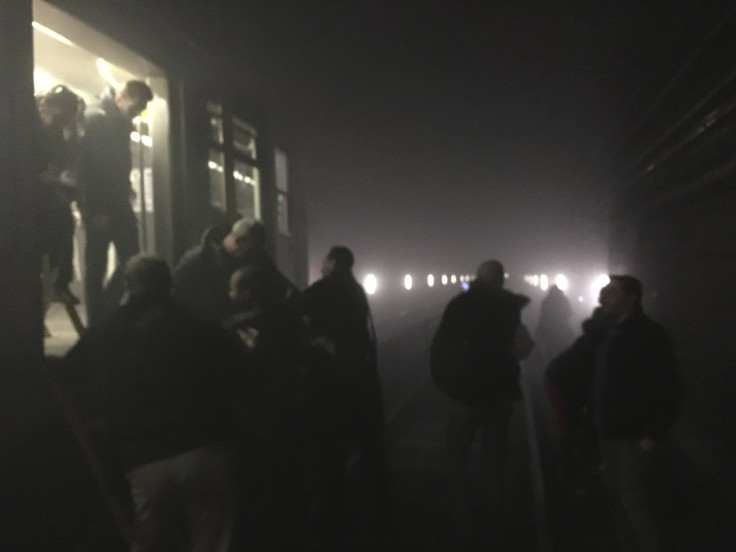Amid Brussels Attacks, EMTs And Paramedics Face New Reality Of Terrorism And An Evolving Set Of Challenges

Sirens blared as an ambulance sped down the street. A team of first responders hoisted what resembled a body from one stretcher to another. A woman held a cell phone to her ear with a bloodied hand.
The string of terrorist attacks Tuesday morning in Brussels that killed at least 31 people and injured more than 200 others was the latest large-scale crisis to test first responders. Training for mass disasters has long been part of the emergency medical curriculum, but paramedics and emergency medical technicians say responding to terrorist attacks poses unique challenges that can evolve with each new event.
“I was taught a long time ago that as we train and put our response plan together, we’re reacting to previous types of events,” said Greg Santa Maria, who has worked in emergency medicine since 1988 and was running the paramedic program at St. Vincent’s Hospital in New York City on Sept. 11, 2001. “Terrorist groups are consistently coming up with new ways to do things. We have to think outside the box on a regular basis,” added Santa Maria, who is now the enterprise manager of public safety at Sanford Health in Sioux Falls, South Dakota.
One tactic seen frequently in recent terrorist attacks, including in Brussels on Tuesday, is that of multiple attacks in different locations. Coordinated attacks in Paris in November were launched across six locations over the course of roughly half an hour, for instance. Some have suggested that those attacks were modeled on attacks in Mumbai in 2008 that stretched over some dozen locations. That model has changed the way law enforcement and medical first responders alike handle the situation.
After one attack, “we have to be aware that there’s a high probability that there’ll be another event,” Santa Maria said.

As a result, emergency medical technicians and paramedics have to be more conscientious about their own safety, because they don’t help anyone by becoming another casualty. But they’re also under pressure to act quickly — to take care of people, to save lives — especially in attacks in crowded areas targeting masses of people.
Dia Gainor, the executive director of the National Association of State Emergency Medical Services, who has worked in the field for nearly 35 years, said the risk to first responders has dramatically changed emergency medical practices and training, at least in the United States. In fact, it has given rise, particularly over the last decade, to specialty fields, like tactical emergency medical services, which focuses on how to provide medical care during an active threat.
“The clinical care is not different. It’s the logistics of how to handle the scene that changes dramatically,” Gainor said. “It’s not just Grandma at her house.” Instead of rushing to the scene, finding victims and stopping bleeding or splinting limbs, EMTs and paramedics now have to coordinate with police and law enforcement teams. They may have to don protective gear, almost as if they are in combat, Gainor added.
Terrorist attacks don’t change the logistics merely for trained medical providers, of course. Civilians, bystanders, survivors — they become unwitting caregivers, because they too can save lives if they act quickly, especially if an attack occurs somewhere police and emergency medics cannot reach right away, like an underground metro station, several emergency medicine experts pointed out.

“The real first responders are the people at the event,” said Georges Benjamin, the executive director of the nonprofit American Public Health Association. Even an act as seemingly basic as stopping a bleeding wound can save a life, he pointed out.
This fact has not been lost on the medical community and authorities at large. In October, the U.S. Department of Homeland Security rolled out its “Stop the Bleed” campaign. “No matter how rapid the arrival of professional emergency responders, bystanders will always be first on the scene,” says the campaign’s website, which lays out three steps — compress, place a tourniquet and compress again — for stopping bleeding. “Research has shown that bystanders, with little or no medical training, can become heroic lifesavers,” the White House said in announcing the initiative.
Cities around the world are on heightened alert after the Brussels attack, but there’s no telling when or where another attack could be, or what it could like. For EMTs, paramedics and others, this means dealing with events as well as they can, given their training and experience.
“It’s a continuous learning process,” Benjamin said.
© Copyright IBTimes 2024. All rights reserved.






















